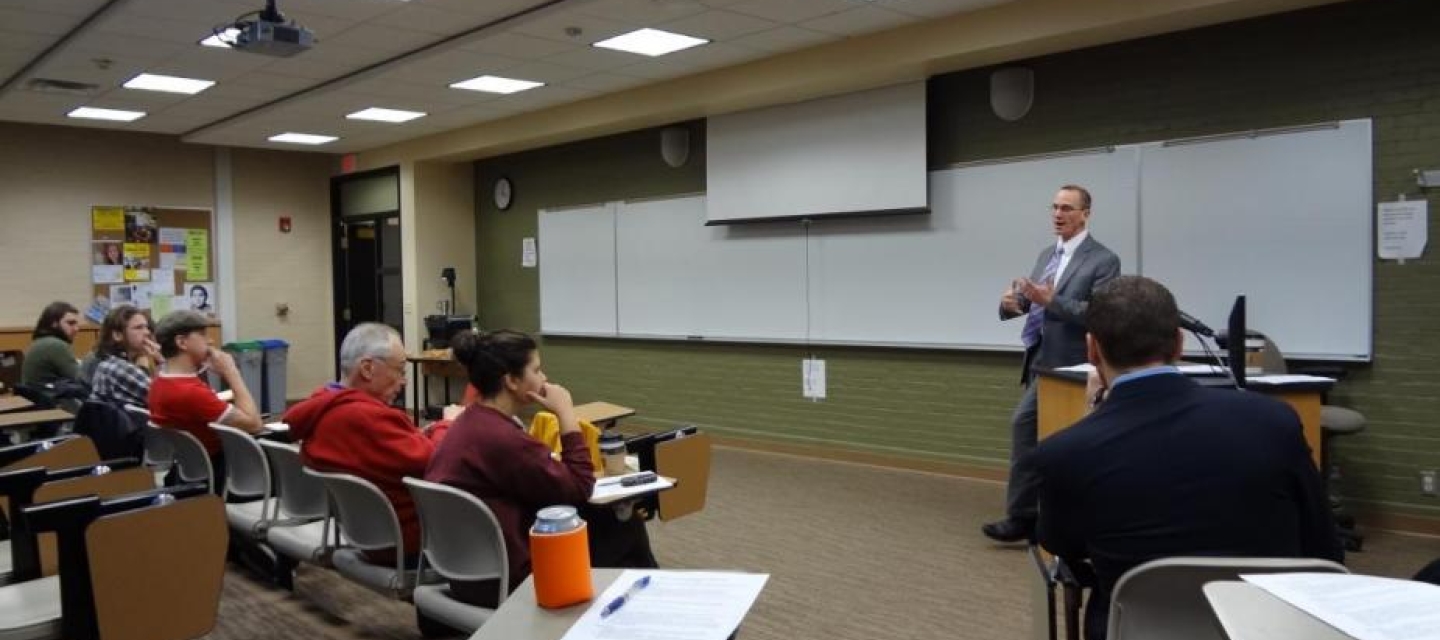
- A (student) discussion chair will introduce the title and author of the paper being presented, the name of the discussant, and the discussion format (3-5 minutes).
- A (student) presenter (previously selected by faculty) will read a paper, 10-12 pages maximum, or about 20-25 minutes reading time, which is the typical time allotted for conference papers.
One or more faculty members must have previously read your paper and offered some comments and suggestions prior the date of presentation.
The presenter may want to prepare a 1-page handout (it should not exceed this length) to distribute on the day of the paper that may include: long quoted passages, an outline of the argument of the paper, key definitions or terms that will be used throughout the paper, abstract of the argument presented in the paper, or anything that will generally help the audience to follow the paper being read.
- A (student) discussant (previously selected by faculty and student presenter) will prepare a 10-minute response to the paper, which he or she will also read immediately following the paper.
The aim of the discussant’s comments is twofold: (1) to help the presenter to improve his or her paper / argument, and (2) to lead the audience in a discussion of this work. One of the faculty members will have previously read your response and offered some comments and suggestions prior to the date.
It is a professional courtesy to give the presenter an idea of your talking points at least several days prior to his or her presentation (this can be done via email).
It is not customary for the discussant to prepare or distribute a hand-out.
It is often the case that philosophers use conference presentations to work out ideas for a paper they’d like to eventually submit for publication. A good discussant aims his or her comments towards helping the presenter to achieve this goal by providing specific ways to strengthen the presenter’s work.
Structure comments as follows:
(a.) Begin with a very brief (2-3 minute) summary of the argument of the paper, which is not the same thing as a summary of the paper.(b.) Articulate 2-3 brief and specific talking points.
The first point should be a positive comment that is specific to the paper; e.g., something beyond “I really liked your paper,” or “That was totally interesting.”
You might then turn to some point of the paper that needs to be elaborated, further clarified, etc.
Offer constructive criticism of some aspect of the argument or paper. Be charitable and helpful. Here the idea is not to “go for the jugular,” but to help the presenter to strengthen the paper / argument by offering a counter-argument, opposing point of view, etc.
Less is more. Be sure that your points and or questions are clear, narrowly focused, and relevant to the present paper. After some preliminary comments leading up to your question, you should be able to express each of your questions or criticisms in 1-2 sentences. Clarity and brevity are helpful for both the presenter and audience, who need to be able to understand and remember your points.
- Immediately following the discussant’s comments, the presenter is given 10-15 minutes to respond to the discussant.
- The chair then thanks the reader and discussant, and opens up the floor for a general discussion of the paper and discussant’s comments (20-25 minutes). The chair’s job is to facilitate the discussion by calling on audience members in the order in which they raise their hands, and generally moderating the discussion (e.g..., politely limiting the length of time for questions, changing a line of questioning that goes on too long, etc.). The chair should call on students first, before faculty. Faculty members will be happy to jump in to help the chair to moderate the discussion if necessary.
Once your paper has been selected for the Department Colloquia, students must:
(a.) immediately email the colloquia coordinator the name of the faculty member who has agreed to work with them on their paper (students who do not have a faculty advisor will not be included on the program)
(b.) at least two weeks prior to the scheduled presentation, submit a complete and polished paper (not more than 12 pages, doubles-spaced, 12 pt. font) to their faculty adviser and colloquia coordinator. If students do not submit a complete and polished paper at this time, their colloquium session will be canceled; it maybe be rescheduled at the discretion of the colloquia coordinator
Again, the spirit behind this series is to provide a venue for friendly and focused discussions of your great ideas. And you do have great ideas, which we are all eager to hear.
Thanks for your participation. Please direct questions to Kimberly A. Blessing, chair and associate professor of philosophy.

